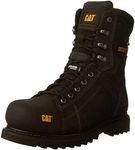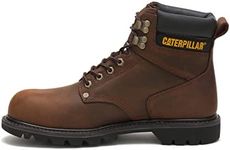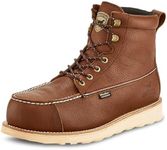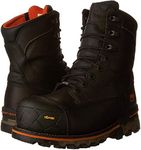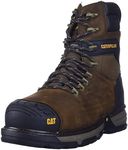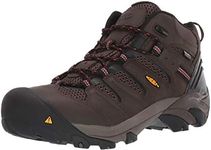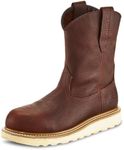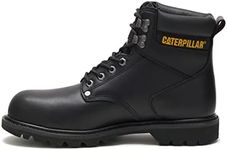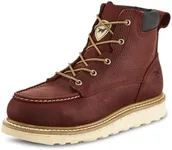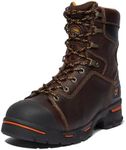Buying Guide for the Best Work Boots For Concrete
Choosing the right work boots for working on concrete is essential for your comfort, safety, and long-term health. Concrete surfaces are hard and unforgiving, so the boots you pick should provide excellent support, cushioning, and protection. When shopping, focus on features that help reduce fatigue, prevent injuries, and withstand the tough environment. Understanding the key specifications will help you make a choice that matches your daily needs and keeps you comfortable throughout long shifts.Sole Material and CushioningThe sole material and its cushioning are crucial because they determine how much shock is absorbed with every step. On hard concrete, a good cushioned sole reduces foot fatigue and joint pain. Soles can be made from materials like rubber, polyurethane, or EVA. Rubber soles are durable and slip-resistant, polyurethane offers lightweight comfort and shock absorption, and EVA is very soft but may wear out faster. If you spend long hours standing or walking, prioritize boots with thick, cushioned midsoles and shock-absorbing insoles. For lighter use, a moderate cushion may be enough.
Slip ResistanceSlip resistance refers to how well the boot grips the floor, which is especially important on potentially wet or dusty concrete. Outsoles with deep treads and special rubber compounds provide better traction. Some boots are rated for slip resistance, which can help you compare options. If you work in environments where spills or dust are common, look for boots with high slip resistance. For mostly dry, clean concrete, standard tread patterns may suffice.
Support and Arch TypeSupport and arch type relate to how the boot holds your foot and supports your natural arch. Good support prevents foot pain and long-term issues like plantar fasciitis. Boots can have flat, moderate, or high arch support. If you have flat feet, look for boots with extra arch support or removable insoles so you can add your own. If you have high arches, make sure the boot doesn't feel too tight across the middle. For most people, moderate support works well, but always consider your foot shape and any past foot problems.
Toe ProtectionToe protection is about keeping your toes safe from falling objects or compression. Options include steel toe, composite toe, or soft toe. Steel toes offer the most protection but are heavier, composite toes are lighter and non-metallic, and soft toes provide no extra protection but are lighter and more flexible. If your job requires safety certification or you handle heavy materials, choose steel or composite toe. For less hazardous environments, soft toe boots may be more comfortable.
Waterproofing and BreathabilityWaterproofing keeps your feet dry in wet conditions, while breathability allows sweat to escape, keeping your feet comfortable. Some boots use waterproof membranes, while others rely on treated leather. If you work outdoors or in wet environments, waterproof boots are a must. For indoor or dry conditions, prioritize breathability to avoid sweaty, uncomfortable feet.
Durability and ConstructionDurability and construction refer to how well the boots are made and how long they will last. Look for features like double or triple stitching, quality leather, and reinforced heels and toes. Cement construction is lighter but may not last as long, while welt construction is heavier but more durable. If you work long hours or in tough conditions, invest in boots with strong construction. For lighter, occasional use, standard construction may be sufficient.
WeightThe weight of the boot affects how tired your legs and feet feel after a long day. Heavier boots often offer more protection and durability, while lighter boots are more comfortable for all-day wear. If you need maximum protection, a heavier boot may be necessary. If you move a lot or cover long distances, a lighter boot can help reduce fatigue.
